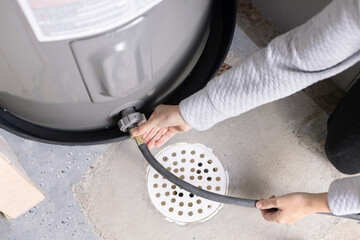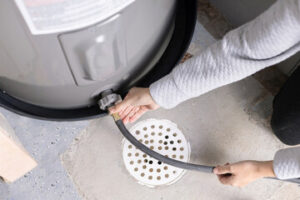Stucco repair restores your home’s stunning exterior. It also protects your investment by preventing moisture infiltration.
Stucco remediation begins with a visual and physical inspection of the stucco wall system. Areas around windows are the most common places to find signs of moisture damage. Contact Stucco Repair Philadelphia now!

Mix the stucco mud (or drywall) according to product instructions and apply it to the lath with a trowel, firmly pressing each application.
Cracks and Chips
Many stucco walls will develop cracks over time, but most of these can be easily repaired. It’s important to inspect the cracks and determine the reason they are occurring in order to make the best decision for how to address them.
Hairline Cracks
Small hairline cracks may be caused by the natural expansion and contraction of the wall. These are generally harmless and can be sealed with a caulking compound. However, it’s important to assess the cracks to see if there are any signs of moisture behind them such as soft areas, discoloration or peeling.
Foam Trim Cracks
If you notice foam trim cracking, this is usually because the foam trim was not properly installed. This means that the contractor did not use fiberglass mesh tape on the corners and edges of the foam, which can lead to cracking over time.
Pattern Cracks
If the cracking in your stucco follows a pattern, this is often a sign of structural changes taking place. It is possible that there are seismic movements in your house, or that the foundation is shifting, and if this is the case then these cracks will need to be addressed sooner rather than later.
Stucco Patch
For larger cracks, it is essential to ensure that the exposed lath is covered with grade-D builder’s paper before making a stucco repair. This is to prevent moisture infiltration, which can lead to wood lath rot and metal lath rusting. This can cause the stucco to loosen and eventually pull away from the wall.
Apply a thin slurry coat of stucco patch material to the crack, using a trowel to blend the repaired area into the existing texture. Allow the patch to dry according to the manufacturer’s instructions, then finish with a quality water-based paint that matches the color of your stucco. Once the stucco patch is fully cured, it will be flexible and not likely to crack further. Keeping your stucco in good condition is one of the most effective ways to keep moisture and other unwanted elements out of your home.
Mold and Mildew
Stucco isn’t as porous as drywall or wood, making it less susceptible to mold and mildew. However, this doesn’t mean that it doesn’t need to be cleaned regularly. Just like any other exterior, dirt, pollen, and organic debris will accumulate on stucco surfaces and provide food for mold and mildew to grow. This is why routine cleaning is so important.
In addition to the normal dusting and sweeping, use a soft bristle brush to apply a cleaning solution that is formulated for stucco (available at home improvement stores) to remove mold and mildew. Rinsing and drying thoroughly are also essential for preventing more serious issues down the line.
A good rule of thumb is to check your stucco for black stains underneath windows or other areas, as well as musky odors, which can all indicate the presence of mold or mildew. If you notice these signs of mold, a professional should be consulted to address the issue. Trying to repair over these symptoms can lead to more extensive damage in the future and may not be a long-term fix.
Remediation is more expensive than simply repairing cracks, but it will prevent further damage and keep your stucco looking its best. While it may seem tempting to postpone this service, a professional can give you peace of mind that your stucco is safe and sound, as well as offer guidance on the next steps for your specific home.
For severe cases of mold and mildew, it is necessary to remove the affected sections of your stucco to avoid structural problems. This can be a complex job that requires the use of a circular saw and demolition skills. Once the affected areas are removed, you can replace them with a new batch of stucco mixed to match your existing exterior. For more extensive damage, you will need to remove the building paper behind the stucco as well. This is a complicated project and can be better left to a professional. A professional will also be able to assess the cause of the moisture intrusion and make appropriate repairs.
Rotten Wood
Stucco can be a wonderful choice for a home, especially if you live in a climate that can experience extremes of weather, but the material is not ideal for soaking moisture. Heavy rains or snowstorms can damage the surface of stucco by absorbing water and leaving a pocket of water behind it, which will eventually lead to mold and rot. The first sign of rot is often a musty smell. As the rot progresses, it can cause more damage to the surface of the wood and may eventually cause the structural wood to collapse.
If rot is caught early enough, it can be repaired with a wood hardener. This product can be purchased at most hardware stores and is applied as a paint. Once it dries, the damaged wood should be removed and replaced with new wood lath. If the rot is advancing, a professional might recommend that you consider full-scale stucco remediation.
The major benefit of remediation is that it solves the underlying problem instead of just applying a bandaid to the affected area. If moisture penetrates the stucco, it will continue to do so, no matter how many times you repair it. Remediation can also help protect your interior structure from moisture intrusion, as it is often a sign of more severe underlying problems like mold and rot.
Whether you are repairing cracks, fixing a wet patch or resurfacing an entire wall, it’s important to take your time and do the job correctly. It’s not rocket science, but it does require some know-how and the right tools. If you aren’t familiar with working with stucco, it is best to hire a professional to handle the task. A good handyman will be able to identify larger issues that might need to be addressed before applying any stucco and can help you decide between repair or remediation. By addressing problems before they turn into serious structural problems, you can save yourself a lot of money down the road. Contact Volpe Enterprises to discuss your options for stucco repair or remediation. We can address a variety of issues, including faulty construction practices, house settling and seismic activity.
Structural Damage
Small cracks in stucco that are not repaired quickly can become a breeding ground for mold, mildew, and other serious structural problems. These issues may lead to rot, structural damage, and even partial or complete wall collapses.
Moisture penetration can damage the stucco, drywall, and wood behind it. A professional stacco repair contractor can address moisture damage to prevent further problems and protect the value of your home or commercial property.
The most common cause of stucco deterioration is water infiltration. This can occur from leaking roofs, around chimneys and window and door openings, or through ground settlement. The freeze-thaw cycle, combined with improper drainage, can also exacerbate small cracks in the stucco surface.
Insect infestations, such as termites or carpenter ants, can also destroy stucco over time. Regular inspections and pest control measures can help reduce these infestations. High humidity levels are another major factor that contributes to mold growth and erosion of stucco surfaces. This can be corrected by installing dehumidifiers and improving ventilation.
Pitting is another common problem with stucco that should be addressed immediately. These are small indentations in the stucco that should be filled and smoothed with a stucco mix. A professional can apply this mixture to ensure the piting is blended seamlessly with the rest of the stucco.
Wide or diagonal cracks in the stucco surface indicate a more serious issue that requires immediate attention. These cracks are caused by the foundation shifting or settling, which can eventually separate the stucco from the wall and cause further problems.
Water intrusion into the structure of a building can be very costly. It can cause rot, mold, and other moisture-related damage to the wood and drywall. It can also compromise energy efficiency by allowing drafts to enter and conditioned air to escape.
Stucco repairs can be relatively inexpensive, but extensive damage that is not addressed promptly can cost significantly more in the long run. The key to minimizing these costs is early detection, which can be accomplished with routine inspections and a thorough understanding of the stucco construction process.
![Metal Roofing Installation: Step-By-Step Guide [2025]](https://cdn.prod.website-files.com/63a02e61e7ffb565c30bcfc7/6476e0917bdc09608d9b46a6_Metal%20Roofing%20Installation.svg)










